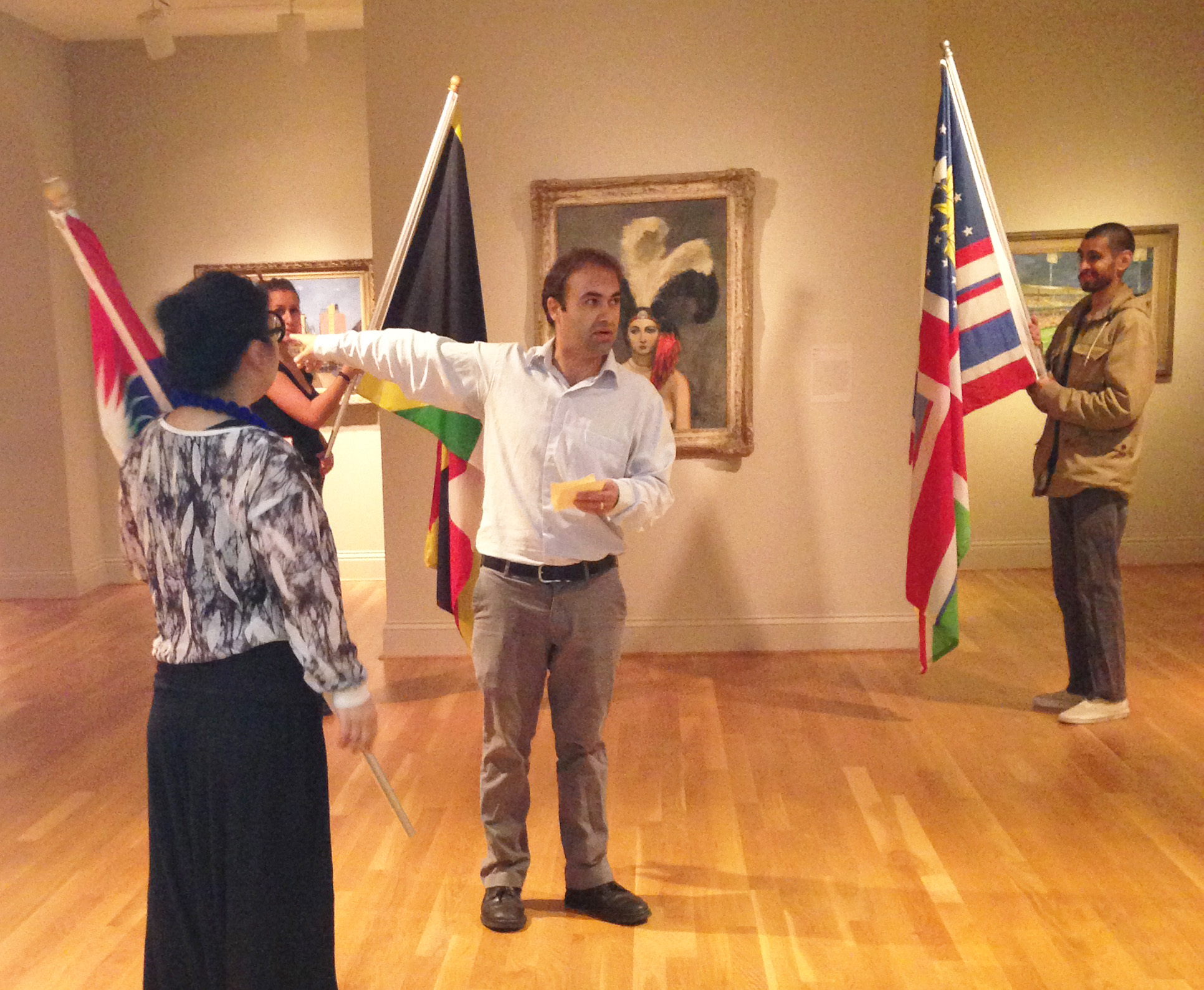On October 27, artist Pedro Lasch will premiere his work Abstract Nationalism/National Abstraction: Anthems for Four Voices at The Phillips Collection as part of the International Forum Weekend in Washington. In this audio-visual performance, national anthems of specific countries are sung in the language of the country listed alphabetically after it in the World Almanac.
In a six part blog series, Curatorial Intern Lauren Reuter asks the artist about this work and how it fits into the Phillips, art, and politics. Read Part 1 here, Part 2 here, and Part 3 here.
How do you draw the line between different styles of art? Where do you think your work “belongs,” in the traditional sense? How does it fit into the Phillips’s mission of the “experiment station,” which you discussed with Vesela [Sretenović, Senior Curator of Modern and Contemporary Art]?
I’ve never believed in the separations that, to me, seem like artificial constructs of artistic labels like “contemporary.” Half the time, these labels aren’t helpful. I love the idea of the “experiment station,” and I’m completely in agreement with it. That’s what we’re trying to do: we’re experimenting at the Phillips together, collectively, and with the audience, with different fields of the arts. The separations I am referring to between modern, contemporary, historical, European, non-European—these have been produced for practical purposes, but then people forget to see their limitations.

Pedro Lasch, Schematic Scores, Flag Fusions and Visual Props from Abstract Nationalism & National Abstraction (2001/2014)
While I know the Phillips focuses on collecting and showing “modern art,” as a contemporary artist I don’t separate myself from modernism and modernity. In general, I try very hard to make work that doesn’t allow people to maintain these divides, just like the Phillips project doesn’t allow people to maintain rigid separations between nations and languages.
Working in the Phillips is a fantastic opportunity to highlight the complexity of history and of how artists work with history. I think the reason Vesela pointed out the “experiment station” is that she also doesn’t see this neat separation between modern, post-modern, and contemporary. And that’s part of what she and others are doing at the Phillips: stressing the contemporary and how alive many of these things are. Art is made alive by keeping a certain engagement with it. In the case of programs like the Intersections contemporary art series, it’s by setting up dialogues with artists who are alive. But in other cases it’s by simply pressing the idea of the ongoing experiment, returning to the moment when a space was conceived and thinking about how that moment and meaning has changed over time.


